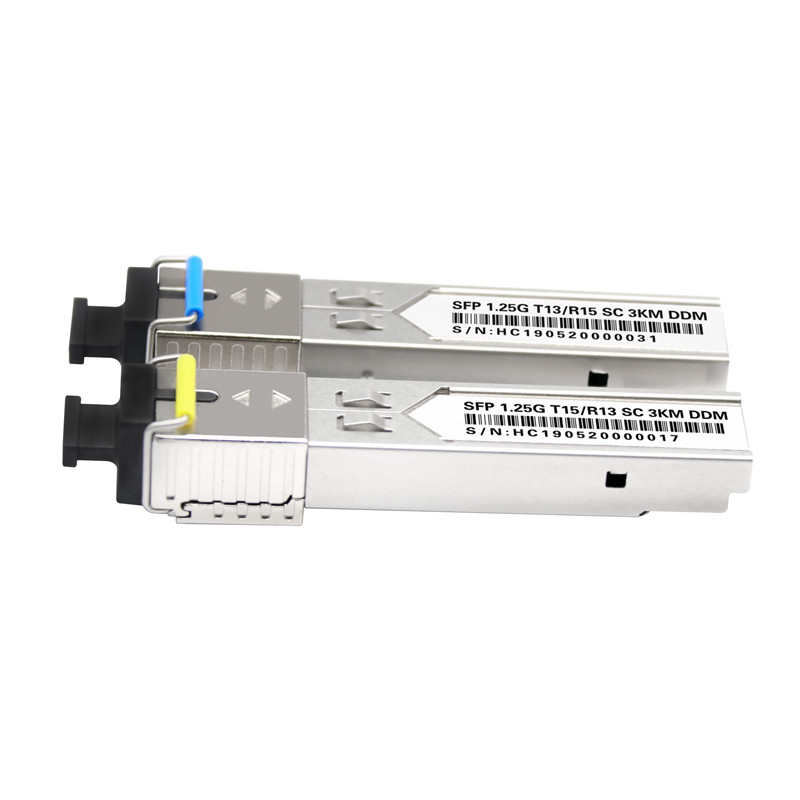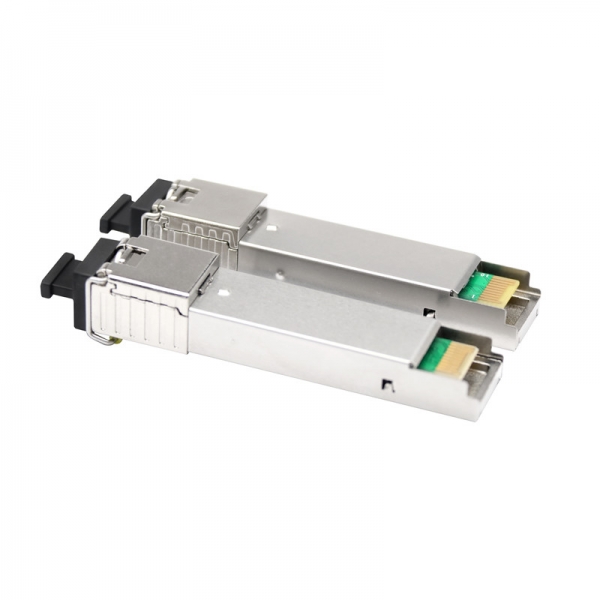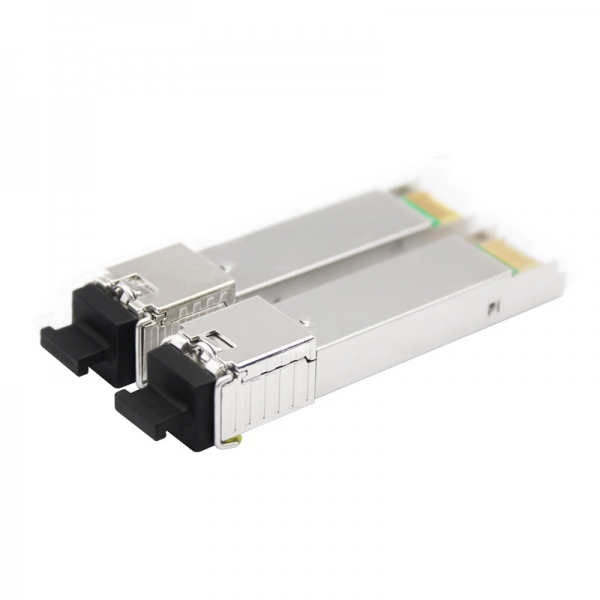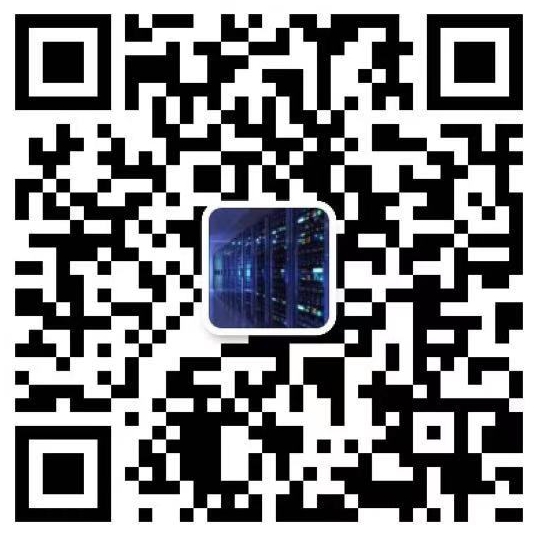Applications
●Gigabit Ethernet
●Fiber Channel
●Switch to Switch interface
●Switched backplane applications
●Router/Server interface
●Other Optical Links
Product Descriptions
SFP-BIDI transceivers are high performance, cost effective modules supporting dual data-rate of 1.25Gbps/1.0625Gbps and 3km transmission distance with SMF.The transceiver consists of three sections: a FP laser transmitter, a PIN photodiode integrated with a trans-impedance preamplifier (TIA) and MCU control unit. All modules satisfy class I laser safety requirements. The transceivers are compatible with SFP Multi-Source Agreement (MSA) and SFF-8472. For further information, please refer to SFP MSA.
Absolute Maximum Ratings
|
Parameter |
Symbol |
Min. |
Max. |
Unit |
Note |
|
Supply Voltage |
Vcc |
-0.5 |
4.0 |
V |
|
|
Storage Temperature |
TS |
-40 |
85 |
°C |
|
|
Relative Humidity |
RH |
0 |
85 |
% |
|
Note: Stress in excess of the maximum absolute ratings can cause permanent damage to the transceiver.
General Operating Characteristics
Electrical Characteristics (TOP(C) = 0 to 70 ℃, TOP(I) =-40 to 85 ℃,VCC = 3.13 to 3.47 V)
|
Parameter |
Symbol |
Min. |
Typ |
Max. |
Unit |
Note |
||
|
|
||||||||
|
Differential data input swing |
||||||||
|
|
VIN,PP |
|
120 |
|
820 |
mVpp |
1 |
|
|
Tx Disable Input-High |
VIH |
2.0 |
|
Vcc+0.3 |
V |
|
||
|
Tx Disable Input-Low |
VIL |
0 |
|
0.8 |
V |
|
||
|
Tx Fault Output-High |
VOH |
2.0 |
|
Vcc+0.3 |
V |
2 |
||
|
Tx Fault Output-Low |
VOL |
0 |
|
0.8 |
V |
2 |
||
|
Input differential impedance |
Rin |
|
100 |
|
Ω |
|
||
|
|
||||||||
|
Differential data output swing |
||||||||
|
|
Vout,pp |
|
340 |
650 |
800 |
mVpp |
3 |
|
|
Rx LOS Output-High |
VROH |
2.0 |
|
Vcc+0.3 |
V |
2 |
||
|
Rx LOS Output-Low |
VROL |
0 |
|
0.8 |
V |
2 |
||
Notes:
1. TD+/- are internally AC coupled with 100Ω differential termination inside the module.
2. Tx Fault and Rx LOS are open collector outputs, which should be pulled up with 4.7k to 10kΩ resistors on the host board. Pull up voltage between 2.0V and Vcc+0.3V.
3.RD+/- outputs are internally AC coupled, and should be terminated with 100Ω (differential) at the user SERDES.
Optical Characteristics (TOP(C) = 0 to 70 ℃, TOP(I) =-40 to 85 ℃,VCC = 3.13 to 3.47 V)
|
Parameter |
Symbol |
Min. |
Typ |
Max. |
Unit |
Note |
||||||
|
Transmitter |
||||||||||||
|
|
λ |
|
1270 |
|
1310 |
1360 |
nm |
|
||||
|
1510 |
1550 |
1570 |
|
|||||||||
|
Ave. output power (Enabled) |
PAVE |
-15 |
|
-8 |
dBm |
1 |
||||||
|
Extinction Ratio |
ER |
9 |
|
|
dB |
1 |
||||||
|
RMS spectral width |
Δλ |
|
|
3 |
nm |
|
||||||
|
Rise/Fall time (20%~80%) |
Tr/Tf |
|
|
0.26 |
ns |
2 |
||||||
|
Dispersion penalty |
TDP |
|
|
3.9 |
dB |
|
||||||
|
Output Optical Eye |
Compliant with IEEE802.3 z (class 1 aser safety) |
|||||||||||
|
Receiver |
||||||||||||
|
Operating Wavelength |
λ |
1510 |
1550 |
1570 |
nm |
|
||||||
|
1270 |
1310 |
1360 |
|
|||||||||
|
Receiver Sensitivity |
PSEN |
|
|
-20 |
dBm |
|||||||
|
|
||||||||||||
|
Overload |
||||||||||||
|
|
PAVE |
|
-3 |
|
|
dBm |
3 |
|||||
|
LOS Assert |
Pa |
-35 |
|
|
dBm |
|
||||||
|
LOS De-assert |
Pd |
|
|
-21 |
dBm |
4 |
||||||
|
LOS Hysteresis |
Pd-Pa |
0.5 |
|
|
dB |
|
||||||
Notes:
1.Measured at 1250Mb/s with PRBS 2 223 – 1NRZ test pattern.
2.Unfiltered, measured with a PRBS223 – 1 test pattern @1.25Gbps
3.Measured at 1250Mb/s with PRBS 223 – 1 NRZ test pattern for BER < 1x10-1
4. When LOS de-asserted, the RX data+/- output is signal output.
Pin Defintion And Functions
Notes:
1.When high, this output indicates a laser fault of some kind. Low indicates normal operation. And should be pulled up with a 4.7 – 10KΩ resistor on the host board.
2. TX disable is an input that is used to shut down the transmitter optical output. It is pulled up within the module with a 4.7 – 10KΩ resistor. Its states are:
Low (0 – 0.8V): Transmitter on (>0.8, < 2.0V): Undefined
High (2.0V~Vcc+0.3V): Transmitter Disabled Open: Transmitter Disabled
3.Mod-Def 0,1,2. These are the module definition pins. They should be pulled up with a 4.7K – 10KΩ resistor on the host board. The pull-up voltage shall be between 2.0V~Vcc+0.3V.
Mod-Def 0 has been grounded by the module to indicate that the module is present
Mod-Def 1 is the clock line of two wire serial interface for serial ID
Mod-Def 2 is the data line of two wire serial interface for serial ID
4.When high, this output indicates loss of signal (LOS). Low indicates normal operation.
5.RD+/-: These are the differential receiver outputs. They are AC coupled 100Ω differential lines which should be terminated with 100Ω (differential) at the user SERDES. The AC coupling is done inside the module and is thus not required on the host board.
6. TD+/-: These are the differential transmitter inputs. They are AC-coupled, differential lines with 100Ω differential termination inside the module. The AC coupling is done inside the module and is thus not required on the host board.
Digital Diagnostic Specifications
The transceivers can be used in host systems that require either internally or externally calibrated digital diagnostics.
|
Parameter |
Symbol |
Units |
Min. |
Max. |
Accuracy |
Note |
|
Transceiver temperature |
DTemp-E |
ºC |
-45 |
+90 |
±5ºC |
1 |
|
Transceiver supply voltage |
DVoltage |
V |
2.8 |
4.0 |
±3% |
|
|
Transmitter bias current |
DBias |
mA |
2 |
80 |
±10% |
2 |
|
Transmitter output power |
DTx-Power |
dBm |
-15 |
-4 |
±3dB |
|
|
Receiver average input power |
DRx-Power |
dBm |
-23 |
0 |
±3dB |
|
Notes:
1.When Operating temp.=0~70 ºC,the range will be min=-5,Max=+75
2. The accuracy of the Tx bias current is 10% of the actual current from the laser driver to the laser
3. Internal/ External Calibration compatible.
Ordering Information
|
Description |
|
SFP BIDI,1.25G ,1310/1550nm ,3Km,0~70℃, with Digital Diagnostic Monitor |
|
SFP BIDI,1.25G ,1550/1310nm ,3Km,0~70℃, with Digital Diagnostic Monitor |
|
SFP BIDI,1.25G ,1310/1550nm ,3Km,-40~85℃, with Digital Diagnostic Monitor |
|
SFP BIDI,1.25G ,1550/1310nm ,3Km,-40~85℃, with Digital Diagnostic Monitor |















